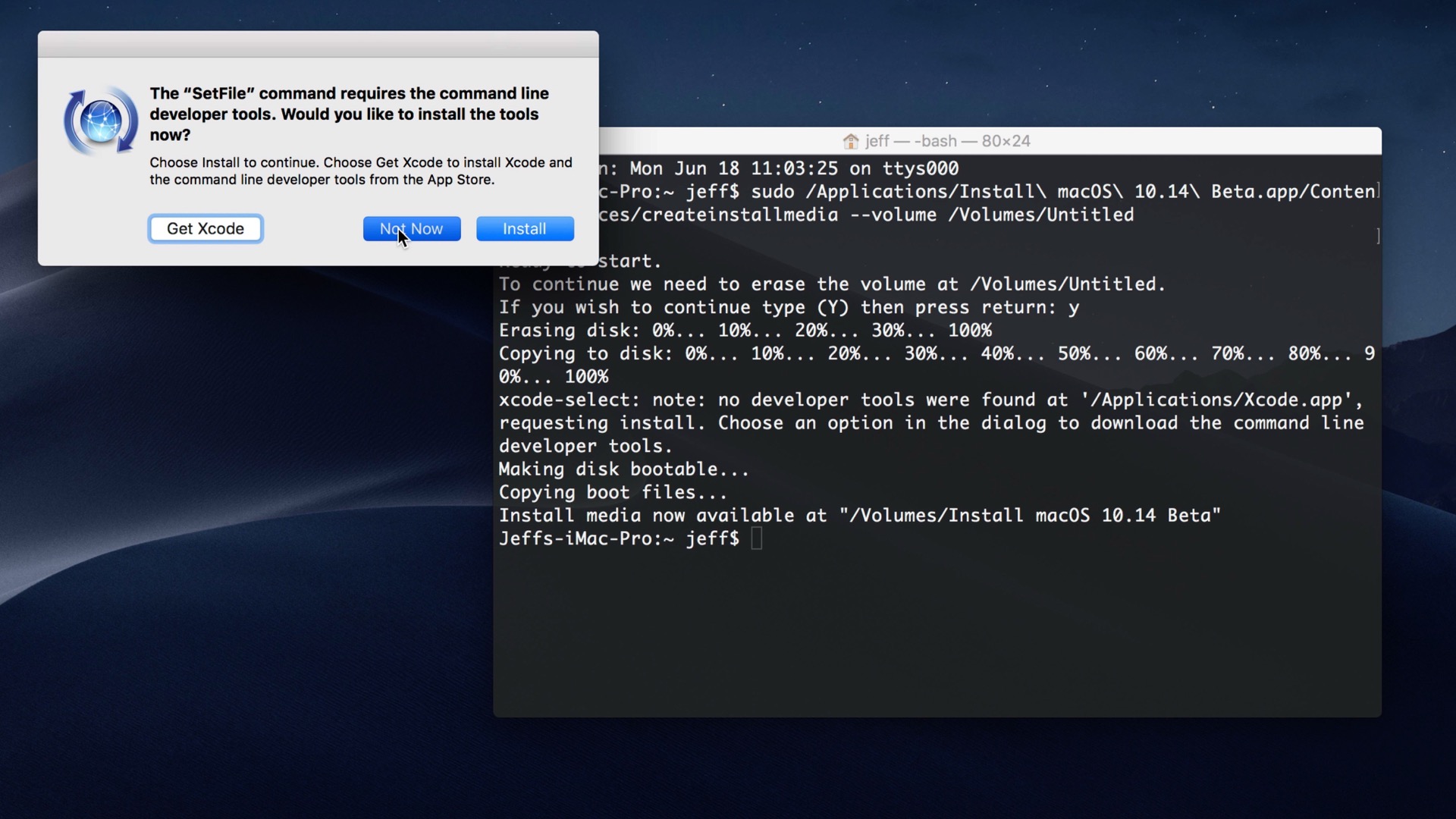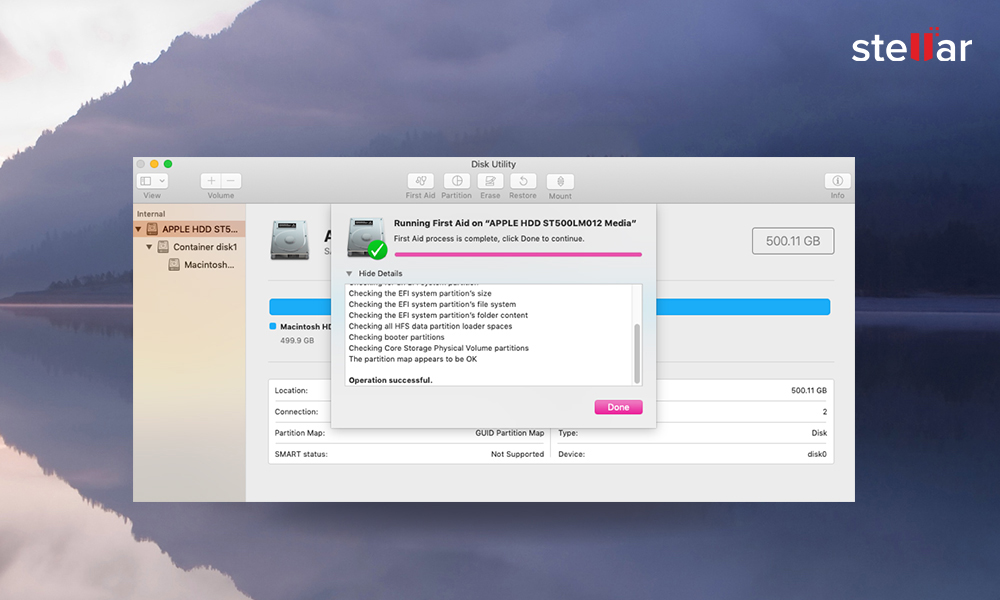Unfortunately, it seems that developers of Lazesoft Mac Data Recovery will never update this file recovery software to officially support the latest version of Mac OS X because the last update was released in 2014. Advantages: Designed specifically for Mac users. Features an easy-to-use interface. Runs on older versions of Mac OS X.
Download External Recovery Startup Software For Mac Mojave Newest Version
- Download MacOS Mojave 10.14.6 Bootable usb File Free Download Download MacOS Mojave Bootable DMG file for Mac Laptop version 10.14.6. Macos Mojave is the fifteenth major release of macOS, Apple Inc’s desktop operating system for Mac laptop. The successor to macOS High Sierra, it was announced at WWDC 2018 on June 4, 2018.
- Although there is no Recuva Data Recovery for Mac, you can still free download the top 5 Mac file recovery software to help you get data back without much effort. And through our tests, Recoverit Mac Data Recovery can be a nicer option for you. It supports you recovering 100MB files for free before purchasing the full version.
Summary: Are you dealing with a crashed Mac or unable to boot your Mac machine?
Before you think of reinstalling macOS or doing a hardware fix, ensure that you’ve rescued your data from the device.
This blog will guide you through an easy process of creating a bootable macOS Mojave USB install drive or a recovery USB drive using Stellar Data Recovery for Mac software.
The USB recovery drive will help you to recover the data from your crashed or non-booting macOS. So go ahead, download the free software trial now.
Minimum requirement: 8 GB USB flash drive, Mac, and Mojave installer.
- Download macOS Mojave 10.14 from App Store.
- When the download completes, quit the installer, as it will launch itself automatically.
- Locate the installer from the Applications folder (copy it to the desktop if you desire).
- Connect the USB flash drive with at least 8 Gigabytes storage space to your Mac.
- Open Terminal and enter the next command: sudo (drag and drop the installer from application folder to locate its path) –volume (drag and drop the USB flash drive from the Mac volumes to specify its path) –nointeraction –downloadassets
Warning: The command erases the flash drive so check there are no stored files; backup the files, if they exist, before executing the sudo command.
- Type the administrator password when prompted. The Terminal creates the installer drive on the opted USB flash drive.
Note: Erase the flash drive to HFS+ (Mac OS Extended (Journaled)) but not APFS.
Usage of USB Install Drive
- Backup the entire drive before performing a clean install on your Mac machine.
- Connect the USB install medium.
- For T2 security chip supported by 2018 MacBook Pros and iMac Pros, you need to “allow booting from external media” from Startup Security Utility. Alternatively, hold the option key and reboot the Mac then use the arrow key to select the USB flash drive as an installer.
- Allow the computer to boot from the USB flash drive. Deploy the macOS Mojave software.
Installer Tips
- When Apple releases newer Mojave versions, re-download the new installer and recreate installer drive to keep it up to date.
- Keep the installer drive on a safe place so that you can use it as an external recovery drive when your Mac gets into trouble.
Data Recovery on macOS: Why We Need It Here
While performing macOS upgrade or fresh installation, you must back up data to an external storage medium. Backup helps to restore all the data back to Mac’s internal storage drive, containing the new macOS. If you do not have a backup, then you end up losing all your data stored in the Mac drive. This is because, during macOS installation, the installer erases the startup partition completely or the entire storage drive, depending upon your choice during installation.
If No Backup: What Is the Recourse?
There are chances that you did not take backup to an external backup drive, or in the rare case, the backup itself was lost, damaged, or unavailable. In such scenarios, you can rely on a data recovery software—such as the editor’s choice Stellar Data Recovery Professional for Mac—that can recover your lost data after macOS Mojave installation. The software works flawlessly with the older & newer version of MacBook Pro, MacBook Air, iMac, iMac Pro, and Mac Mini etc.
The Process of Data Recovery
The process of data recovery is straightforward. Follow the steps mentioned below to get back the data stored in the drive—erased completely after installing the new macOS Mojave:
1. Download and install the Mac data recovery utility on the same system where you have installed the new macOS Mojave (due to the negligible storage requirement of the utility).
2. Alternately, you can download and install the utility on a different Mac machine, then connect the internal drive as an external device by removing it from the affected Mac.
3. Launch the data recovery software to interact with its lucid graphical user interface.
4. In the Recover Data module, select the type of data and the location of the storage drive.
5. Toggle on the Deep Scan switch from the bottom left and click the Scan
6. Allow the scan to complete, which may take some time—depending on the storage size and the condition of the affected drive.
7. Preview the recoverable files if you want, then select all the required files and click the Recover
8. Specify a different external backup drive with size greater than the drive where you are performing the data recovery then click Save.
When the save process is complete, verify the recovered data from the backup storage drive. Copy the files back to your Mac or an externally used Mac drive (reconnect the drive to the Mac once the restoration process is over).
Activation of the Software
You must activate Stellar Data Recovery Professional on your Mac in order to save the recoverable files. The free download version of the software is a good way to know the software’s interface, scan your drive, and preview the recoverable files.
Watch the activation video of Stellar Data Recovery Professional to know how to activate the software and use its complete functionality, including the complementary Drive Monitor, on your iMac or MacBook system.
Conclusion
The blog highlighted the need for recovery drive, steps to create a bootable USB flash drive, and usage of the drive for installing the new macOS Mojave 10.14 in one or multiple computers. The drive acts as an external recovery drive in case your Mac fails to boot. In addition, the drive acts as a means to fresh install the drive to boost the performance of your slow, virus-infected, or troubled Mac. The blog also suggested a data recovery software that can help recover data lost due to macOS Mojave installation on your desktop or notebook computer.
Oct 16, 2020 • Filed to: Solve Mac Problems • Proven solutions
Recovery Mode in OS X provides a set of solutions for users to utilize when users need to repair and reinstall their operating system in an emergency. You can also reset the Mac password using recovery mode if needed. There are several ways to boot Mac into recovery mode. If you find one method overwhelming, there are several other alternatives you can use. We will walk you through the different ways on how to boot Mac into recovery mode so that they will become undoubtedly useful in a rare emergency.
Part 1: How to Boot Mac in Internet Recovery Mode
Along with the introduction of a locally stored recovery volume, Apple introduced its Internet Recovery service that allows your operating system to download contents of the recovery hard disk partition from the company's service. This option is great to use when your local drive is completely corrupted and you no longer can access locally-stored recovery tools.
To launch Internet Recovery, make sure your Mac is connected to a WiFi network and follow the steps below:
- Reboot your Mac.
- Hold the 'Options', 'Command', and 'R' buttons until the boot chimes are triggered.
- Wait until the system finished downloading the recovery tools from Apple's website.
It is noted that you are unable to boot Mac into Recovery Mode if you are using devices older than the ones below:
- MacBook Pro (13-inch, Early 2011)
- MacBook Pro (15-inch, Early 2011)
- MacBook Pro (17-inch, Early 2011)
- iMac (21.5-inch, Mid 2011)
- iMac (27-inch, Mid 2011)
- MacBook (13-inch, Mid 2010)
- MacBook Pro (13-inch, Mid 2010)
- Mac mini (Mid 2010)
- MacBook Pro (15-inch and 17-inch, Mid 2010)
- iMac (21.5-inch and 27-inch, Mid 2010)
- MacBook Air (11-inch and 13-inch, Late 2010)
Part 2: How to Create a bootable drive into Recovery Mode
You can create a bootable drive to store an OS X Recovery Disk so that you can access recovery tools anytime, anywhere. It would be great if you could invest in a high-capacity USB 3.0 flash drive to store the required tools.
There are plenty of articles outlining how you can create a bootable OS X Recovery Disk, including ours. Once you have this established, you can follow these steps to get your Mac into Recovery Mode:
- Reboot your Mac.
- Hold down 'Option' on your keyboard once you hear the chime sound.
- Attach your bootable OS X Recovery Disk to your Mac and select it from the prompt list.
- Your Mac will launch into Recovery Mode and you can start fixing your Mac.

As you can see, there are plenty of methods you can use to boot Mac into Recovery Mode. There is no need to panic when you find yourself in trouble - just choose and master the method that seems least intimidating to you and you will be well on your way. After you boot Mac into Recovery Mode, you can also restore your data on Mac.


Part 3: How to Boot Mac with Installation Disk
If you are using an older Mac, it probably comes with a grey recovery DVD that you can use to run recovery routines. If you had bought a copy of a newer operating system, you can also use the installation disk to perform recovery.
It is the easiest way to go into Recovery Mode and here is how you can do it:
- Insert the grey DVD and reboot your Mac.
- Hold down 'C' on your keyboard until you hear the boot chimes.
The recovery tool will take some time to load. Follow the wizard that will put your Mac into Recovery Mode.
Download External Recovery Startup Software For Mac Mojave Newest Windows 10
Part 4: How to Boot Mac into Recovery Mode with Local Recovery
- Reboot your Mac.
- Hold the 'Command' and 'R' buttons until the boot chimes are triggered.
- You will see the OS X utility window that will prompt you to choose one of the four options.
Part 5: How to Boot Mac into Recovery Mode from Time Machine
It is really important to keep backups of your machine and Apple facilitates this with its Time Machine feature. It would be best to store your backup on an external drive so that you can initiate Recovery Mode using this when your hard drive is wiped out.
Follow these steps to boot Mac into Recovery Mode:
- Reboot your Mac.
- Hold down the Option button when the startup chimes sound.
- Connect your Time Machine drive. It will take some time for the system to detect the drive. You might need to key in your password.
- Choose the drive to launch your Mac into Recovery Mode.
Download External Recovery Startup Software For Mac Mojave Newest Os
After all the above methods, you finally fail to boot your Mac into Recovery mode. Don't worry. We also provide further solutions for you - Fix 'Cannot boot into Recovery mode'. For those who need the data recovery solution, Recoverit would be a nice option. Free download and try it now.
Video Tutorial on How to Boot Mac into Recovery Mode
What's Wrong with Mac
Download External Recovery Startup Software For Mac Mojave Newest Mac
- Recover Your Mac
- Fix Your Mac
- Delete Your Mac
- Learn Mac Hacks
